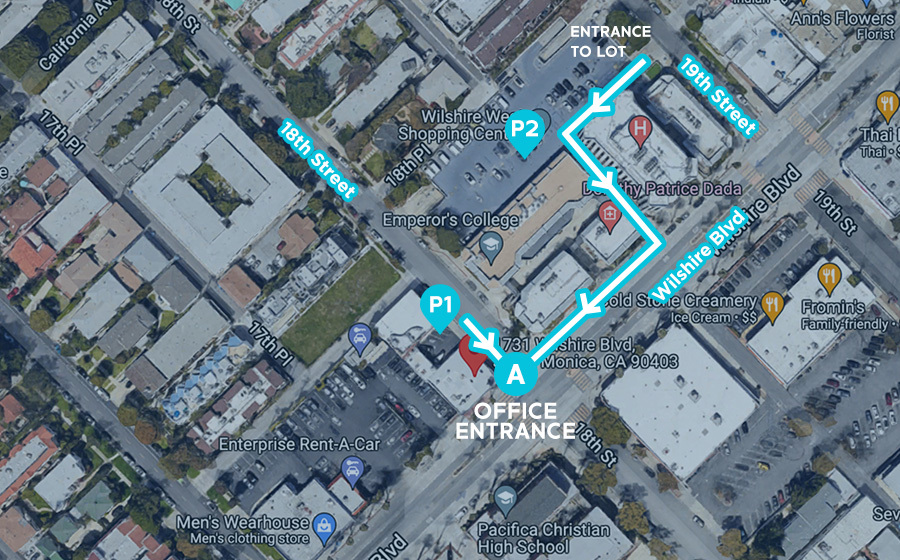Professional Treatment of Orthodontic Emergencies

Orthodontics is a specialty of dentistry that encompasses a clinical diagnostic of abnormalities related to teeth and jaw misalignments that impact the dental and facial structures in patients.
Consequentially, orthodontics helps prevent health-related issues affecting a person’s quality of life. For example, an abnormal bite might cause tooth decay deriving cavities, and periodontal disease.
Furthermore, an improper bite might also produce sleeping problems (sleep apnea), craniofacial complications, gastrointestinal issues related to inadequate nutrient absorption, losing dental pieces, and infections that might spread to other parts of a patient’s body.
What does this tell us? The answers are simple. First, orthodontics help patients avoid future costly health problems. Secondly, orthodontists work with dental specialists, including hygienists, dentists, and periodontists, forming a team that ensures exceptional oral health for patients.
Also, orthodontists are planners that make a scheme (treatment plan) to reach the final result, a healthy and beautiful smile. But sometimes, there might be problems that could delay the treatment objective’s deliverance. This article treats the issues related to orthodontic emergencies and how to deal with them.
What Are Orthodontic Emergencies?
When we refer to orthodontic emergencies, we discuss the issues that could suspend or interrupt treatment and delay the final result, which is clinically aligned teeth.
Furthermore, patients might prevent most orthodontic emergencies. Here we detail some of the most common and preventable cases.
Sharp Orthodontic Emergencies
A sharp or acute emergency in orthodontics refers to trauma cases requiring immediate treatment.
Trauma Injury
A traumatic orthodontic emergency derives from a blow to the mouth, jaw, or face. It usually occurs when playing contact sports or in accidents in braces-wearing patients.
Braces might intensify the result of a blow because the irregular shape of brackets could damage soft tissue in the lips and cheeks, breaking it and producing bleeding.
Also, a patient must attend emergency care when one or more of the following cases occur:
- Tooth cracked or chipped.
- A missing tooth (fallen or dangling tooth).
- Continued gum injury.
- A broken wire embedded in the cheeks or other soft tissue in the mouth.
- A swallowed or loose bracket inlaid in the gums or lips.
In any of these cases, you must immediately call Abraham Orthodontics and explain you had an accident requiring emergency orthodontic care.
Moreover, suppose you swallow any piece of the appliance, like a bracket or a rubber band, and you experience difficulty breathing and start choking. In that case, a braces component might be obstructing the respiratory system. You need to call 911 immediately for emergency assistance.
There are also cases patients might erroneously identify as emergencies. We include some of the most common issues and DIY temporary solutions before reaching orthodontic assistance.
Stuck Food in Brackets or Wires
This is not an emergency, but we agree it might be pretty uncomfortable to have a piece of sticky food you can‘t unclog with any mechanical action (brushing or flossing). However, in most cases, food gets stuck because patients disregard the specialist’s recommendations about the food they can eat during treatment.
Sometimes, hard-to-eat or crunchy foods get trapped between the appliances, and after several attempts to unclog it, nothing seems to work out. In those cases, you can call Dr. Abraham to schedule an appointment, and he will gladly help you remove it shortly after getting in contact.
Poking Wire
After the installation and adjustment visits, your orthodontist controls that wires don’t poke or touch your gums or cheeks. Notwithstanding, as the treatment advances, wires excess might poke your mouth’s inner soft tissue.
You have three possible actions to solve this inconvenience before you can visit Dr. Abraham:
- Wax: Apply wax to the wire, emphasizing the pointy part of the wire.
- Cotton Ball: Squeeze a cotton ball to the pointy part of the wire.
- Clippers: You can sterilize a nail clipper or a pair of tweezers and cut the excess wire poking the inner parts of the mouth.
- Pencil Eraser: You can use a pencil eraser in two forms. First, sometimes wires derail from a bracket; this might not harm your cheeks or gums, but it is uncomfortable. You can sterilize the eraser part of a pencil and reinsert the wire into the proper position. Secondly, when a wire breaks, you can use the eraser to move or bend the wire to a less threatening position.
There might be cases when none of these products or methods help solve the problem. You can call Dr. Abraham to schedule an emergency appointment. Dr. Abraham will happily address the situation.
A Broken or Loose Bracket or Elastic Band
It is critical to comply with your orthodontist’s recommendations, including avoiding certain foods that could break or lose your brackets.
In these circumstances, having an issue shouldn’t be considered an accident. A patient can just set up an appointment or wait for the next adjustment visit to get a solution to the case. Meanwhile, refrain from playing with the hanging bracket.
Lost Alignment Trays
Losing alignment trays is not a big deal and not an emergency either. If you lose a set of trays, you can wear the previous set of aligners. Meanwhile, ensure to call your orthodontist to order a replacement.
Remember that every minute you spend without using the removable appliances is time the treatment loses progression. Keep this in mind so you take appropriate measures.
Dr. Abraham and His Orthodontic Team Is There to Help
Orthodontic emergencies might occur at any moment. At Abraham Orthodontics, we are pleased to assist you with orthodontic emergencies that might happen to you or your children. You are just a call away from getting immediate assistance or scheduling an appointment to fix any issue that could make you feel uncomfortable.


